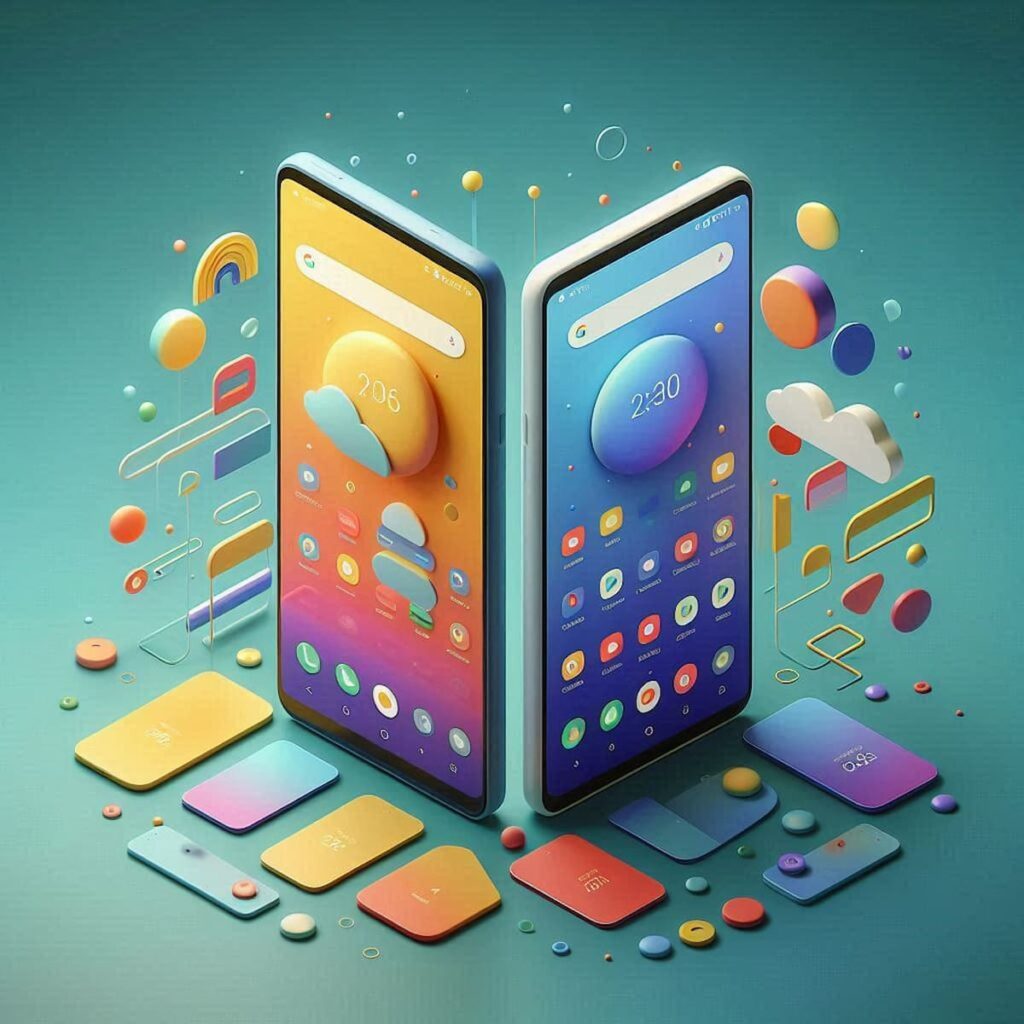When deciding between the Apple iPhone 13 and the iPhone 14, it’s essential to weigh the features and improvements to make an informed choice. Both models are high-quality smartphones with their own strengths, but they cater to slightly different needs. This guide will help you understand what sets these two models apart, ensuring you pick the right one for you.
Key Takeaways
- Design and Build: Both models feature a sleek design with glass fronts and backs, but the iPhone 14 is marginally thicker and heavier.
- Performance: The iPhone 14 has a slightly better GPU, which may result in a smoother experience for gaming and graphics-intensive tasks.
- Camera Capabilities: While both phones have excellent cameras, the iPhone 14 offers enhanced features for video recording.
- Battery Life: The iPhone 14 has a slightly larger battery, providing a bit more endurance.
- Price: The iPhone 13 is more budget-friendly compared to the iPhone 14.
Design and Build Quality
Apple iPhone 13
The iPhone 13 features a modern design with a glass front and back, encased in an aluminum frame. It measures 146.7 x 71.5 x 7.7 mm and weighs 174 grams. The phone is available in multiple colors, including Starlight, Midnight, Blue, Pink, Red, and Green.
Apple iPhone 14
The iPhone 14 shares a similar design ethos with a glass front and back and an aluminum frame. However, it’s slightly thicker and heavier at 146.7 x 71.5 x 7.8 mm and 172 grams. It comes in Midnight, Purple, Starlight, Blue, Red, and Yellow.
Both phones are IP68 dust and water-resistant, which means they can handle splashes and brief submersions in water.
Display
Apple iPhone 13
The iPhone 13 features a 6.1-inch Super Retina XDR OLED display. This screen provides vibrant colors and sharp details with a resolution of 1170 x 2532 pixels. The peak brightness reaches 1200 nits, making it easy to view in bright conditions.
Apple iPhone 14
The iPhone 14 has the same display size and resolution as the iPhone 13, also using a Super Retina XDR OLED panel. It offers similar brightness levels, with peak brightness hitting 1200 nits. Both models support HDR10 and Dolby Vision for an enhanced viewing experience.
Performance and Hardware
Apple iPhone 13
Under the hood, the iPhone 13 is powered by the A15 Bionic chip, which includes a 6-core CPU and a 4-core GPU. It performs exceptionally well for most tasks, from everyday apps to demanding games. The iPhone 13 offers 4GB of RAM and storage options of 128GB, 256GB, and 512GB.
Apple iPhone 14
The iPhone 14 also uses the A15 Bionic chip but comes with a more powerful 5-core GPU, enhancing graphics performance. It offers 6GB of RAM and the same storage options as its predecessor. This slight improvement in GPU performance may be noticeable in graphics-heavy applications.
Camera Systems
Apple iPhone 13
The iPhone 13 has a dual-camera setup with a 12 MP wide and a 12 MP ultrawide lens. The wide lens features a f/1.6 aperture and sensor-shift optical image stabilization (OIS), while the ultrawide lens has a 120-degree field of view. This setup captures excellent photos and videos, with support for 4K recording at up to 60 fps and Dolby Vision HDR.
Apple iPhone 14
The iPhone 14 also has a dual-camera system, but with upgraded sensors. The main 12 MP wide lens has a f/1.5 aperture, allowing more light capture for better low-light performance. The ultrawide lens remains at 12 MP with a 120-degree field of view. The iPhone 14 introduces new features like Cinematic mode for video recording, enhancing the depth-of-field effect.
Battery Life
Apple iPhone 13
The iPhone 13 is equipped with a 3240 mAh battery, which provides solid performance throughout the day. It supports 50% charge in about 30 minutes with wired charging and offers 15W wireless charging with MagSafe.
Apple iPhone 14
With a slightly larger 3279 mAh battery, the iPhone 14 offers marginally better battery life. It also supports the same fast and wireless charging capabilities as the iPhone 13.
Connectivity and Other Features
Apple iPhone 13
- Network: Supports GSM, CDMA, HSPA, EVDO, LTE, and 5G.
- SIM: Offers Nano-SIM and eSIM options.
- Bluetooth: Version 5.0.
- USB: Lightning connector.
Apple iPhone 14
- Network: Same network support as iPhone 13.
- SIM: Offers similar SIM options with additional eSIM features in some regions.
- Bluetooth: Upgraded to version 5.3.
- USB: Lightning connector.
Both phones support Face ID for secure authentication and come with various sensors like accelerometers, gyroscopes, and barometers.
Price
Apple iPhone 13
- Price: ₹49,199 or approximately $369.99.
Apple iPhone 14
- Price: ₹60,900 or approximately $468.20.
Conclusion
Choosing between the iPhone 13 and iPhone 14 depends on your priorities and budget. The iPhone 13 is an excellent choice if you’re looking for a reliable and slightly more affordable option. It provides great performance, a solid camera system, and good battery life. On the other hand, the iPhone 14 offers incremental improvements in GPU performance, camera capabilities, and battery life, making it worth considering if you want the latest features and are willing to spend a bit more.
No matter which model you choose, you’re getting a top-tier smartphone from Apple. Consider what features matter most to you and how much you’re willing to invest to get the best fit for your needs.




